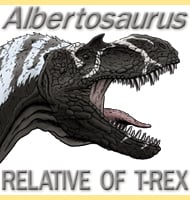In Depth
Stegouros is a genus of small ankylosaurian dinosaur that lived in South America during the late Cretaceous. What is an immediate stand out feature of this dinosaur is the tail which has a very distinct arrangement of osteoderms. This arranging of osteoderms led to comparison to a maquahuitl, a kind of hand held weapon with a wooden handle and shards of obsidian (volcanic glass) studded around the edges that was once use by various Mesoamerican civilisations such as the Aztec, Maya, Mixtec and Toltec.
The tail of Stegouros might have been used as a weapon, though probably not as sharp as the obsidian blades of a maquahuitl. The difference in osteoderm arrangement in Stegouros when compared to other ankylosaurs might also indicate a display function however. The lack of ossified tendons in the tail might indicate greater flexibility, though it’s also possible that the holotype individual of Stegouros might not have been fully grown. In a related manner there were no osteoderms found associated with the head. If present they may not have had time to ossify, even if they did at all.
Stegouros was small when compared to most other ankylosaurs, though roughly comparable to some other southern genera. For this reason Stegouros would have almost certainly been a browser of low growing vegetation. Other dinosaurs from the same fossil formation as Stegouros include sauropods, ornithopods and theropods. However the Dorotea Formation where the holotype of Stegouros was found is composed of marine sediments and also includes plesiosaurs, ammonites and fish. Either Stegouros lived in a coastal habitat, or was washed downstream after death and into an estuary or a coastal sea. We cannot know for certain, but the high level of preservation in the holotype individual of Stegouros does mean that it was probably buried very quickly before scavengers and the elements could destroy the body.
The describers of Stegouros also proposed at the time of the genus description the creation of a new group of ankylosaurs called the Parankylosauria (‘Near Ankylosauria’). This group could include ankylosaurs that are of a different evolutionary lineage separate to members of the Ankylosauridae and Nodosauridae. At the time of the creation of the Parankylosauria, all known members are from southern continents such as Antarctica, Australia and South America, though there is no telling what future discoveries may teach us.Further reading
- Bizarre tail weaponry in a transitional ankylosaur from subantarctic Chile. - Nature. 600 (7888): 259–263. - Sergio Soto-Acu�a, Jonatan Kaluza, Marcelo Leppe, Joao Botelho, Jos� Palma-Liberona, Carolina Gutstein, Roy Fern�ndez, Hector Ortiz, Ver�nica Milla, B�rbara Aravena, Leslie Manr�quez, Jhonatan Alarc�n-Mu�oz, Juan Pino, Christine Trevisan, H�ctor Mansilla, Luis Hinojosa, Vicente Mu�oz-Walther & David Rubilar-Rogers - 2021.









